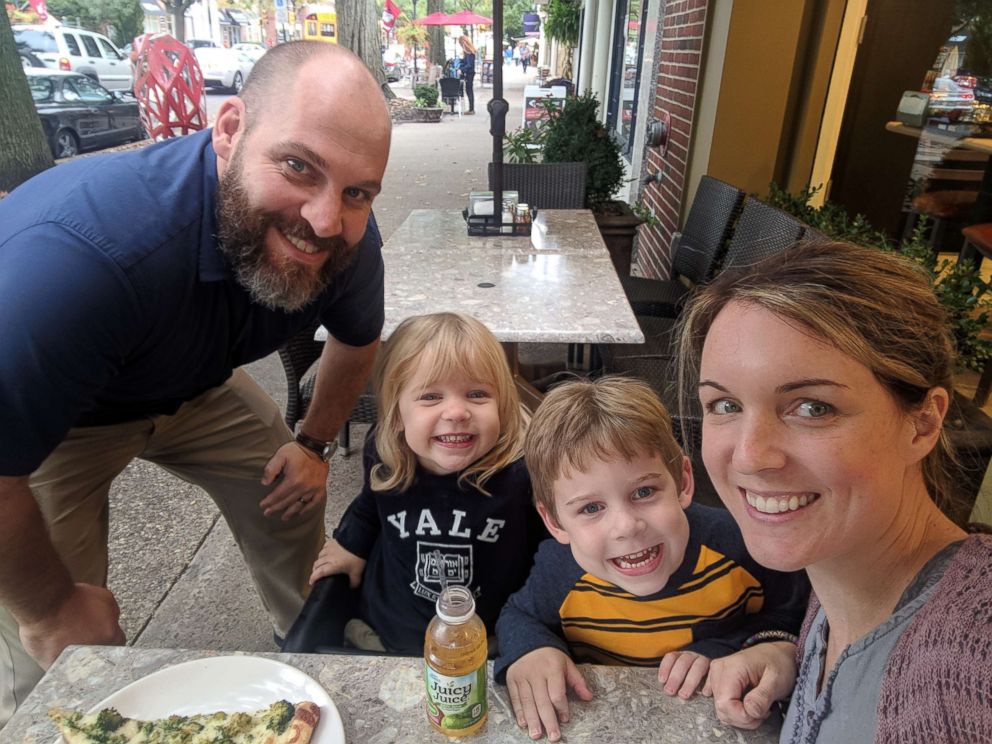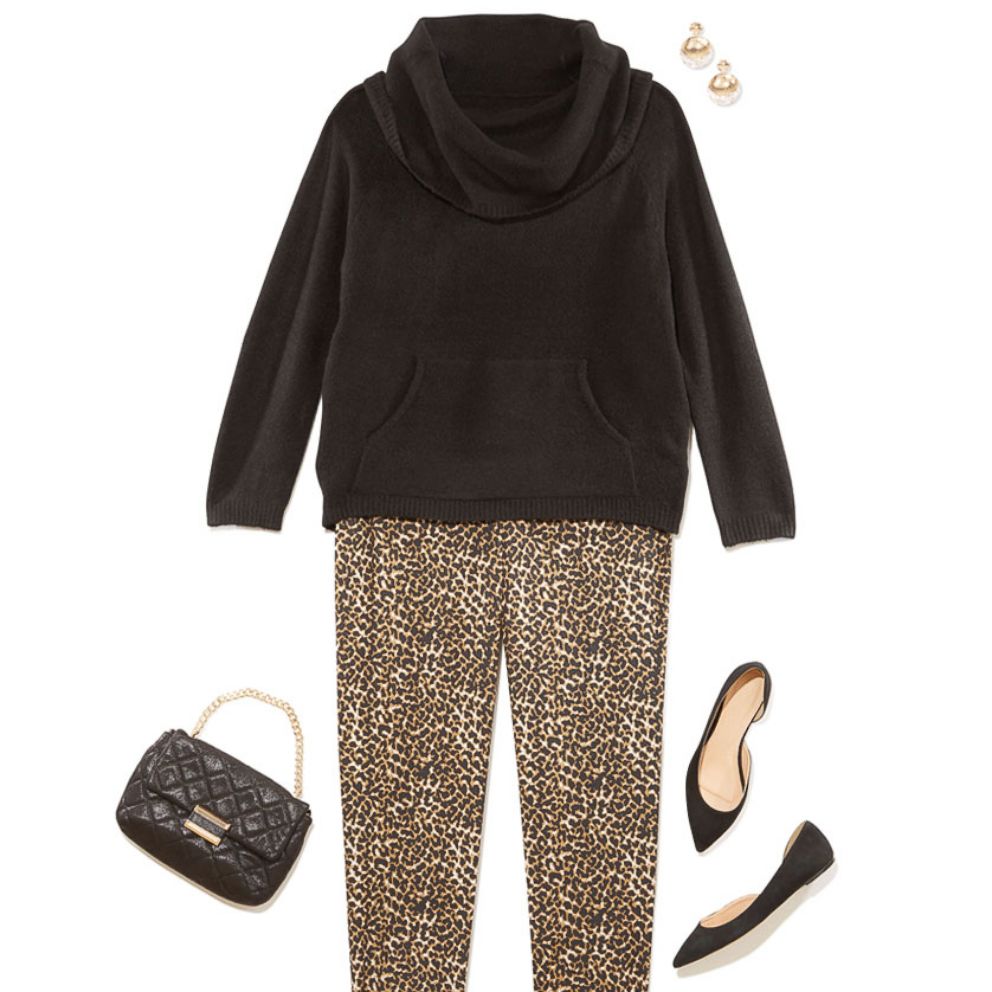Here's why a New Jersey middle school teacher is wearing the same dress for 100 days
She's doing it to promote sustainable fashion and individuality.
New Jersey middle school teacher Julia Mooney is promoting sustainable fashion and individuality in a rather unconventional way.
For 100 days, the seventh- and eighth-grade studio art teacher at William Allen Middle School in Moorestown, New Jersey, will wear the same button hemp dress from retailer Thought Clothing.
The sustainable pick cost her around $50 with shipping. It’s part of her “OneOutfit100Days" project.
Mooney started the project in early September to show that people shouldn’t be defined or labeled by the clothing they wear.
"I was a little bit fed up with the cultural expectation to go shopping and spend all this money for other people to approve of me," Mooney told "Good Morning America." "There is no rule that says I cannot wear the same thing every day if I choose to, so I thought why not. I’m just gonna do that and then we can talk about how our clothes really don't define us."

Mooney hoped that by wearing the same dress daily, the people around her would start to acknowledge that there is more to one’s image than the way they dress.
"The things that we do define us, and if we spend less energy trying to look good and trying to create this superficial image of who we are, then we might have more energy to do meaningful things and define ourselves based on the good that we do instead of how good we look," she said.
Mooney chose the fair trade dress because "it itself is a rejection of fast-fashion," she said, referring to mass retailers who quickly produce clothing in bulk to capitalize on industry trends.
The teacher said she wanted a versatile piece that she could wear with different sweaters and accessories. She also wanted to buy from a company that ethically produces their clothes.
The project evolved to focus on sustainability when she realized the topic wasn’t on everybody else’s radar as much as it was on hers. "It was really just sort of a subconscious underlying motivation for me because that’s just something that I’m interested in my life in general."
She upholds these values in her home life. "We’re always kind of conscious of what we’re using, what we’re wasting and where it’s coming from," she said.

As a new teacher at the middle school — Mooney previously taught at a nearby high school for nine years — she didn’t tell anyone about her mission.
"I just came in to the first day of my career at this new building with people I did not know at all and decided I was just gonna wear the same thing every day, and see how long it took for people to notice," she said.
At first, she had two copies of the same dress that she planned to wear throughout the duration of the project, but now she is halfway through and only has one.
She gave the other dress to a woman she met while on a service trip to Africa in October. The woman didn’t have much and was in need of clothes, she said.
The two agreed that the woman would wear the dress during her travels — possibly sharing it with others — and continue to spread the message of sustainability.
Other than passing one of the dresses off to someone else, Mooney hasn’t had any issues with her initiative so far. If anything falls off or the dress gets a rip, she simply fixes it with her sewing machine.
Mooney was curious to see how people would react — if they would ask her about her choice of clothing or if they would even say anything at all.
Aside from seeing what her students and peers would think, Mooney also wanted to see how she would respond to the challenge herself.
"I don’t really usually think of myself as somebody who really cares that much [about] what people think, but at the same time I did feel self-conscious after a few days walking down the halls saying 'Hi' to the same people, who I knew didn’t really know me but were probably noticing that I was wearing the same thing every day and they just probably didn’t want to be rude and ask me," Mooney said.
"That was the feeling that I got," she added.
Sure enough, some of Mooney's peers eventually got to know her better, and they told her that others had asked them about Mooney's peculiar style. Students, however, asked her directly.
"My students — some of them didn’t notice at all, which I guess is expected because, you know, I’m just a teacher," she said. "But some of them noticed on the second day and asked me why. ... They see me more, I guess. I think maybe being that they’re 12 and 13, they’re just a little more curious and bold. I think my colleagues just didn’t want to be rude and ask me to my face."
She explained the concept to those who asked but resolved to stay quiet about it otherwise.
If she had done the project at her old school, many of her former colleagues would have said something about it, she said.
Mooney took to social media to help clarify her message and appeal to her students on a platform they know well.
"I made the Instagram because I wanted to make sure that the message and ideas behind it were articulated by me," she said. "I knew that kids operate on Instagram, and before this, I really was not much of an Instagrammer. I just made an account for them, so that they could go there and say, 'What is this all about?' and would be able to find out the answer from me that way."
One reaction some people had about Mooney's project was about her personal hygiene. "Some people will say some things like, 'Do you wash it?'" she said.
"That’s kind of their first go-to question, and I just tell them: this is not a project about hygiene. I wash it as needed. I come to work clean. Lots of people wear uniforms and they are not assumed to be dirty. But the minute that there is no uniform policy and somebody voluntarily chooses to wear the same thing everyday, suddenly that’s not socially acceptable, and I think that element of our culture is worth thinking about."
"It really comes down to vanity — the only reason we’re living like that. We end up inadvertently feeding into the fast-fashion culture, which is not good for the planet or our self-health."
To those who view clothes as a form of creative expression, she said she loves fashion and completely supports designers.
"It is, in a way, more of a creative challenge to figure out if you can express yourself in a way that is eco-friendly and maybe a little more minimalist," she said.
"Can you do it with less? Can you do it by reusing what you have? By sharing with other people? Why can’t we share the clothes we’re tired of with the people in our circle instead of getting rid of it and buying something new?" she said.
She added that there are a lot of ways for us to express ourselves creatively while still being mindful of the environment.
Now that Mooney is doing this project, she’s become more conscious of what she’s buying for her children as well, she said.
"My little one’s have always worn thrift or consignment clothes," she said. "I’m not spending a lot of money on their clothes because they grow out of it so fast."
She said her 4-year-old son eventually noticed her project about a month-and-a-half after she began. He wanted to join when she explained the idea to him.
He wore the same thing willingly for 10 days, she said, but then he spotted his "Hulk" shirt and quickly changed his tune.
Mooney’s husband, who is also a teacher, is joining her in the challenge.
"I was really excited to have somebody doing it with me," she said.
Two students in her middle school also participated in the challenge, lasting around 20 days, she said.
Another young student in her district, second-grader Sofia, is working to complete the project as well.
Mooney wants everyone to question clothing norms in society.
"I think sometimes people are afraid to challenge the status quo, and sometimes the status quo needs to be challenged when it doesn’t make sense," she said. "We need to be open to that and have a dialogue about it. We need to be brave enough to start the conversation."






